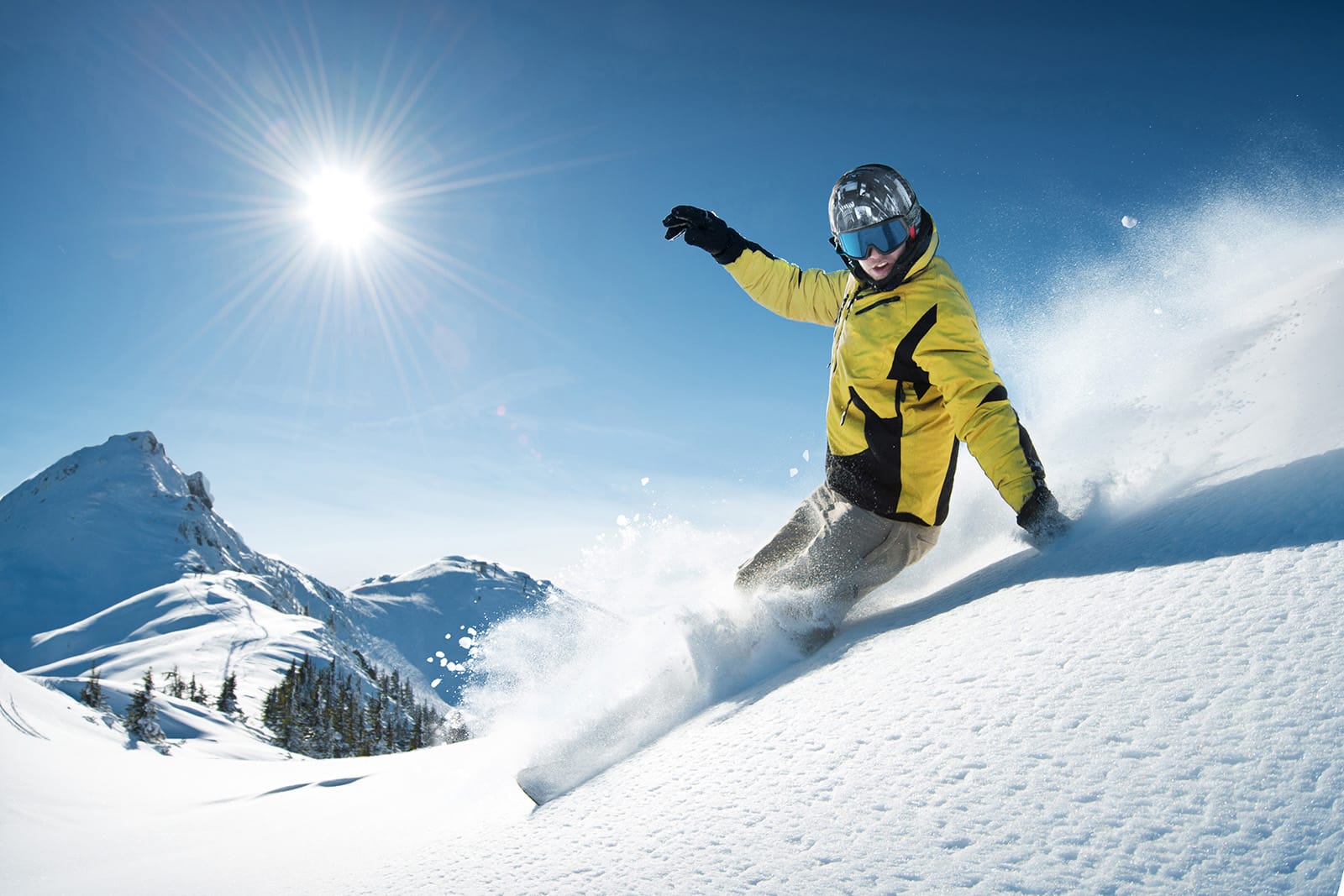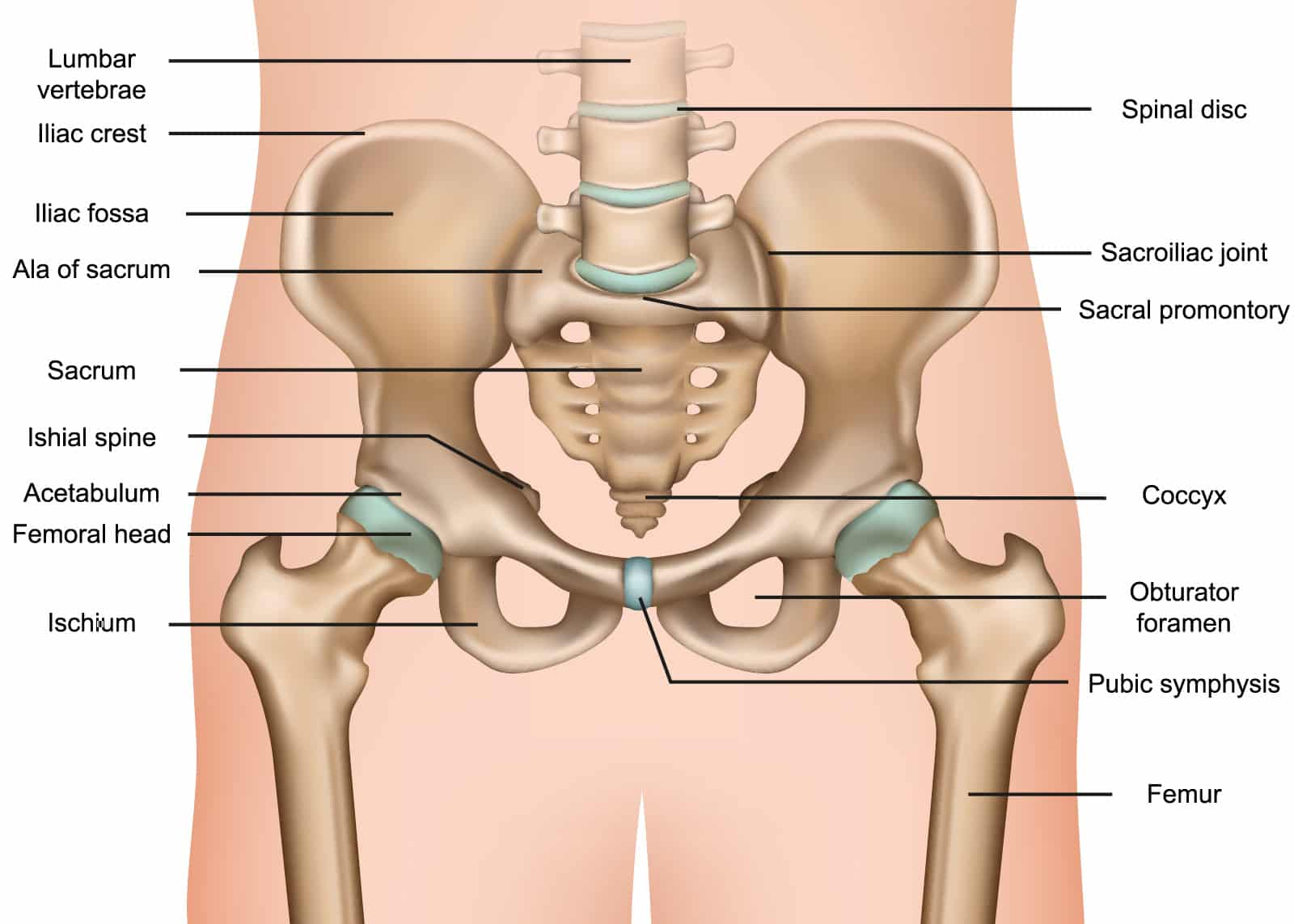
The exhilaration of gliding down snow-covered slopes is a snowsports’ enthusiast’s dream, but the high-speed, dynamic nature of skiing and snowboarding can pose unique challenges and potential risk of injury to the hips.
Although hip injuries are less common than knee injuries when skiing, they can be quite serious and often need medical intervention.
In this blog, we’ll explore some of the common hip injuries encountered by skiers and snowboarders, shedding light on prevention strategies and the importance of proper rehabilitation.
Mechanism of Injury
In recreational skiers, the two main mechanisms of injury are either overuse or over strain, or a high speed crash or collision.
Overuse
Most of us ski only once or twice a year, and it’s fair to say that the majority of people do not prepare themselves for the intensity of activity on the slopes during a holiday.
Therefore, we tend to overload ligaments and tendons and muscles around the hip joint due to weakness and deconditioning.
High Speed Injuries
These are more traumatic injuries that cause damage to the bones (fractures) and/or soft tissues (usually nasty tendon, muscle or ligament tears).
In most cases these injuries require immediate medical attention. A timely diagnosis and treatment can have a significant impact on the longer term outcome of recovery from these injuries.
Anatomy of the Hip

The hip joint is a ball and socket joint, made up of the pelvic acetabulum (socket), and the head (ball) of the thigh bone (femur).
The femur head rests inside the cup-like socket in your pelvis.
The hip joints form a connection from the lower limbs to the pelvis, and are thus designed for stability and weight-bearing – rather than for large ranges of movement.
It is a very large and complex joint, that has several different components:
- Cartilage: Cartilage is a smooth, hard substance that covers the top of your thigh bone and the acetabulum socket. The cartilage is a cushion that absorbs impact when you walk and move and protects the bones from wear and tear..
- Synovium: The synovium is a thin cover that wraps around the bones in your joint. It makes a fluid that provides lubrication to the joint, so your bones can move smoothly and easily.
- Bursa: The bursa is a fluid-filled sac that provides cushioning and allows the tendons and ligaments to glide over the surface of bones without friction.
- Ligaments: Ligaments are fibrous bands of tissue that connect bones to bones. These provide stability to the joint.
- Tendons: Tendons are fibrous bands of tissue that connect your muscles to your bones, which are what power your movements.
- Muscles: Your hips have large muscles that support your joint and help you move. Muscles in your hips include your gluteals, adductor muscles, hip flexors, quadriceps and hamstrings.
Common Skiing Hip Injuries
Labral Tears
The acetabular labrum, a ring of cartilage around the hip socket, can be prone to tears from the rotational forces experienced during skiing or snowboarding. They tend to be overuse injuries, however can also be caused from an isolated high impacts twisting type injury.
Labral tears can cause pain in the groin or deep in the buttock, clicking or catching sensations, and a feeling of the joint being a bit unstable.
You can help avoid these injuries by ensuring that you have strong core and pelvic stability. In most cases labral tears are treated conservatively, however in worst cases, they may require hip surgery.
Hip Flexor Strain
The repetitive motion of skiing and snowboarding, especially during turns and jumps, can strain the hip flexor muscles. This may result in pain, stiffness, and reduced range of motion.
Strengthening exercises, warm-up routines, and maintaining proper form while tackling the slopes can help prevent hip flexor strains.
Hip Bursitis
The repetitive friction between the hip tendons and the surrounding bony structures can lead to inflammation of the bursa, causing hip bursitis. This condition can result in localised pain and tenderness on the outside of your hip. People often complain of pain when sleeping on the affected side.
Skiers and snowboarders should focus on maintaining proper technique, and incorporating hip and glute strengthening, and pelvic stability exercises into their training routines.
Adductor Muscle Strains
Sharp turns and sudden stops common in skiing and snowboarding can strain the adductor muscles on the inner thighs. Adductor muscle strains may cause pain, swelling, and difficulty with lateral (side to side) movements. Warm-up exercises, targeted stretching, and strengthening activities for the inner thigh muscles can reduce the risk of adductor strains.
Hip Dislocation
While rare, the forceful impact from falls or collisions can lead to hip dislocation. This is a severe injury requiring immediate medical attention.
Skiers and snowboarders are advised to wear protective gear, including hip pads, and follow safety guidelines to minimise the risk of high-impact injuries.
In extreme cases, high-energy falls or collisions can result in femoral (thigh bone) fractures, a serious and potentially life-threatening injury. Adhering to mountain safety regulations, staying within skill-appropriate slopes, and using protective equipment are paramount to preventing these injuries.
Conclusion
Skiing and snowboarding provide unparalleled thrills, but understanding the potential risks is crucial for maintaining a safe and enjoyable experience on the slopes. Skiers and snowboarders should prioritise proper strength and conditioning prior to hitting the slopes. Ensure you have the correct equipment, and adherence to mountain safety guidelines.
London Bridge Orthopaedics
We have three highly experienced Hip consultants at London Bridge Orthopaedics.
If hip injuries do occur, make sure you seek prompt medical attention; the likelihood is that there will be a medical centre in resort, and if needed get in touch with one of our LBO Hip Consultants on your return and they will ensure you receive the best possible care and rehabilitation.
For new patient bookings you can contact our dedicated booking line 0203 576 5296. For follow up appointments please book an appointment via your consultant’s secretary.










